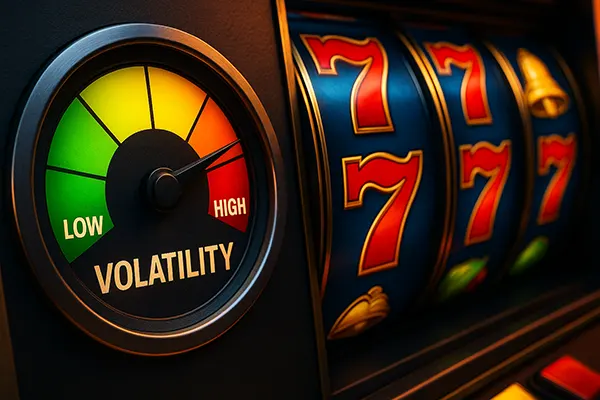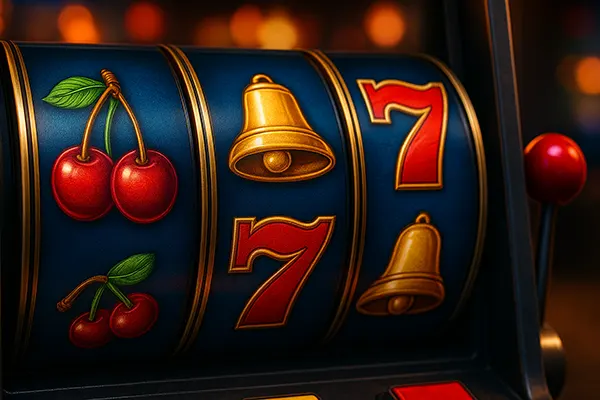
Volatility in Slots: Understanding the Risks Before You Bet
Slot games are more than just reels and symbols—they are carefully designed mathematical systems where volatility determines how often and how much you might win. Understanding volatility helps players make informed choices about their gameplay style, budget, and risk tolerance. In 2025, with online gaming becoming increasingly data-driven, knowing how to assess volatility is essential for responsible and strategic play.
What Slot Volatility Really Means
Volatility, often referred to as variance, measures the level of risk in a slot game. High volatility slots offer fewer wins but potentially larger payouts, while low volatility games provide smaller, more frequent wins. The choice between the two depends entirely on a player’s expectations and bankroll management approach.
For instance, a slot with high volatility may award a jackpot only after hundreds of spins, yet the reward can be substantial. On the other hand, low volatility slots keep the action consistent, with frequent minor prizes that extend gameplay without major fluctuations. Understanding this dynamic helps players align their experience with their financial limits.
Modern slot developers now clearly indicate volatility levels, allowing players to choose based on preference rather than guesswork. Many even include volatility meters within the game interface, enhancing transparency and player control.
How to Identify Slot Volatility
Players can assess volatility by reviewing a game’s paytable, payout frequency, and maximum win potential. Generally, games advertising massive top prizes—such as 10,000x or more—tend to be high volatility, while those offering smaller multipliers and frequent bonuses are usually low volatility.
Testing in demo mode can also provide valuable insight. By spinning multiple times and observing win frequency, players can estimate a slot’s behaviour before wagering real money. This practical approach aligns with responsible gaming practices.
Independent review websites and certified laboratories also publish volatility ratings for popular slots, ensuring accuracy and trustworthiness. Always rely on verified data rather than assumptions when choosing which slot to play.
The Role of Volatility in Bankroll Management
Effective bankroll management is directly influenced by volatility. High volatility slots require larger budgets and patience, as extended losing streaks can occur before a significant win appears. Conversely, low volatility slots suit players with smaller budgets who prefer regular, smaller returns.
Establishing a clear budget before playing is vital. Experts recommend allocating a fixed amount per session and avoiding the temptation to chase losses—particularly in high variance games, where results can swing drastically within minutes.
Understanding volatility allows players to tailor their strategy: casual players may favour steady, low-risk sessions, while experienced ones might pursue high volatility titles for greater long-term rewards.
Volatility and Player Psychology
The emotional response to volatility is often underestimated. High volatility games can generate excitement and tension, but they can also lead to frustration if players aren’t prepared for long dry spells. Recognising these psychological factors helps maintain control and enjoyment.
Low volatility slots are typically associated with relaxed entertainment and sustained engagement. They are particularly suitable for players who enjoy longer sessions without sharp financial swings.
By aligning expectations with volatility, players can maintain a balanced mindset and avoid impulsive decisions, contributing to a healthier and more responsible gaming experience.

How Volatility Affects RTP and Game Features
Volatility works alongside Return to Player (RTP) to shape a slot’s overall payout profile. While RTP indicates the average theoretical return, volatility determines how that return is distributed—whether through frequent small wins or rare but large payouts.
Bonus features often reflect volatility as well. Games with free spins, multipliers, or progressive jackpots usually display higher volatility because their rewards are concentrated in these special rounds. Meanwhile, classic fruit machines with straightforward paytables tend to offer steadier returns.
In 2025, providers increasingly experiment with adjustable volatility options, allowing users to select their preferred risk level. This flexibility makes modern slots more adaptable to different gaming preferences and responsible gambling standards.
Choosing the Right Slot for Your Playing Style
Identifying your own tolerance for risk is the key to choosing suitable slots. If you prefer steady sessions with smaller fluctuations, low volatility titles are ideal. However, if your goal is to chase substantial wins with higher uncertainty, high volatility slots might be more appealing.
Pay attention to RTP, game reviews, and volatility indicators before starting. Combining this information creates a comprehensive understanding of what to expect from each slot, reducing the element of surprise.
Ultimately, understanding volatility empowers players to make data-informed decisions, enjoy the gameplay responsibly, and approach betting with awareness rather than luck.
